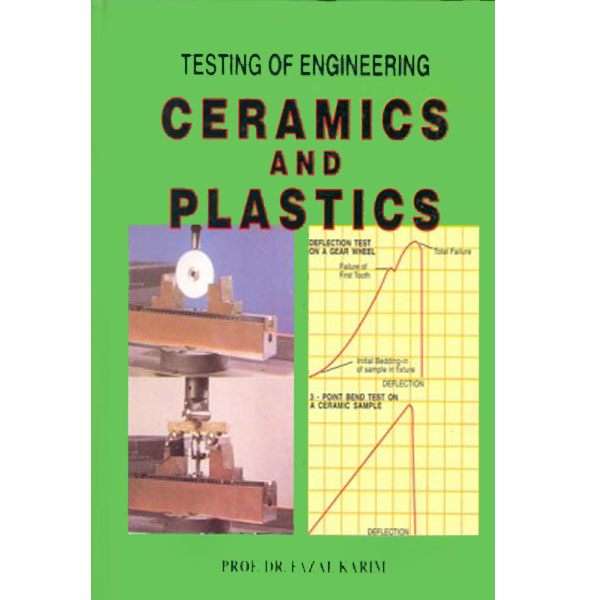This textbook is intended for the University students of Materials Science and Engineering, but it can successfully serve the purpose of a reference book for the research work even at the advanced level, in the field concerned, due to the vast research data it encompasses.Encouraged by my previous publications, in the field of Metallurgy and Materials Science, and particularly by the appreciations of my recent book on “TESTING OF METALS“, by students, teachers and working engineers at home and abroad, I was motivated to embark upon writing this text on “Testing of Engineering Ceramics and Plastics“. No doubt, after metals, ceramics and plastics are the most important parts of this course. In some universities of the world, there are independent departments of ceramics and polymers (plastics). Therefore, in view of the increased importance and requirements of these materials in recent years, I have placed special emphasis on their experimentation and testing.Ceramic and plastic materials have become increasingly important in modern industrial and consumer technology. In other words, these materials are encountered virtually in every facet of industry and in everyday life, yet most engineers and technologists receive little training in the area. Therefore, they are not prepared to take advantage of their unique properties. The understanding of their physical and strength properties can significantly broaden the scope and workability of an engineer, technician or instructor.Experimentation and testing play an important role in developing new materials and equipment and in controlling the quality of materials for use in design, construction and other industrial applications. The rapid progress in industry, military and space technology has created new demands for ceramics not only in electronic but also in protective refractory applications where other engineering materials including metals are not suitable or of marginal value. On the other hand, ceramics offer excellent chemical durability at high temperature, at high stress level and even under dynamic loading.We are living in an age of high temperature technology where ceramics can fulfil this purpose. Keeping high temperature ceramics in view the general area of major concern for developments are:
(1) Materials for use in power generating equipment at very high temperatures such as atomic reactor for the production of electricity.
(2) Materials for electronic components which operate at high temperatures.
(3) Ultra high strength materials for use at ordinary temperature.
Obviously, no traditional or new material can be developed or improved unless it is tested in the Laboratory. In determining the properties for which a material is to be tested, the type of forming or fabricating process to which it will be subjected and also the conditions it will meet in service, must be considered. The value of the test lies in the degree to which the test specimen is representative of the final product.No doubt, many excellent textbooks, written by European and American authors, are available on the theoretical aspects of ceramics and plastics, but most of them ignore the experimentation and testing. One reason for this shortcoming could be that the American Society for Testing and Materials (ASTM) Standards, the British Standards (B.S.), the German Standards (DIN) (Deusche Industrie Normen), etc. are available for this purpose in voluminous compilations, but these are not in the reach of our students. These standard specifications lay down a number of tests for materials but a working textbook according to the laboratory requirements of our students is not available. Hence to solve this problem, I have given a full emphasis on the practical rather than the theoretical aspect of the subject.The book is divided into 12 Chapters. Chapters 1 to 11 are confined to Ceramics only. Each chapter is further divided into various sections and subsections which provide every possible technical information on the test to be performed in the laboratory. Chapter 9 describes standard tests in Sanitaryware production which can be informative for the manufacturers.Chapters 10 and 11 describe quantitative chemical analysis of ceramic materials taking cement analysis as a representative example because the technique applied to cement can be successfully applied to silicate rocks, clays, limestone, magnesite, iron ores, etc., but important experiments of iron ore have also been described. Chapter 12 is on mechanical! strength properties of plastics. Like metals and ceramics, the literature concerned with testing of plastics is also dispersed over a wide field. Therefore, only useful informations related to strength properties of plastics, in the form of discussion, are included, but the introduction to polymers describes everything about plastics in a concise form.However, keeping the size of the book in view, it is not possible to include each and every test in the book, therefore, the most important tests have been included which can be conveniently carried out by the students and working engineers in their respective laboratories. Useful information in the form of technical data is given in appendixes at the end of the book.On the whole, it is believed that the treatment used in this book is in harmony with current trends toward a more practical approach in engineering education.








